How to Change Godaddy Domain DNS to Point to Your Own Hosting
GoDaddy offers a comprehensive suite of services providing both domain registration and hosting services. However, circumstances may arise where hosting a website on a different server becomes a necessity, driven by specific requirements or configurations. In this article we will explain you the step-by-step process of redirecting your domain’s DNS to an alternate server. Prerequisites: · GoDaddy account with a registered domain. · Access to a hosting server with its corresponding public IP address. Step 1: Accessing Domain DNS Settings: Login to your godaddy account and navigate to domain DNS setting- Step 2: Selecting DNS Settings for the Domain Step 3: Viewing the DNS Records Step 4: Editing DNS Records Step 5: Updating IP Address Note: It is important to acknowledge that the propagation of DNS records may take anywhere from 24 to 48 hours. During this time, the DNS records will gradually start pointing to the new server IP address. You can monitor the progress using tools such as https://www.whatsmydns.net/ by entering your domain name. Conclusion: Once the domain DNS successfully propagates to the new server IP address, you gain the ability to manage your website hosting from the new hosting panel. This ensures a smooth transition and enables you to host your website with the desired configuration.
Myths Regarding the Creation of Custom Website Development
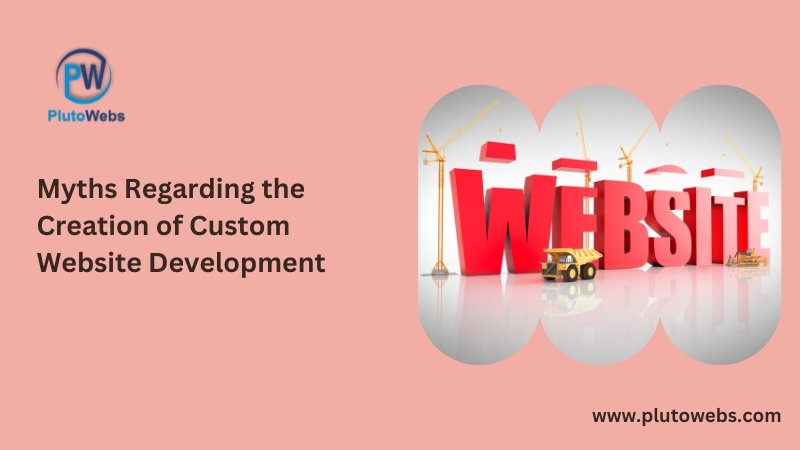
Your business needs a top-notch website that performs well. You might need to work with a web development company to do this. But how can you be certain that the demands you make and the terms you negotiate will be exactly what you want and, more significantly, what you actually get? So, an excellent place to start would be to educate yourself on the most prevalent myths surrounding web development. Quality web development is a multi-step, intricate process. Every modern business needs a well-designed website since it guarantees excellent functioning, easy navigation, and a strong online presence for your brand. As a result, there are many misconceptions about what you need and don’t need while looking for a freelancer or an agency to build your website. Others can cost you a lot of time, money, and occasionally even clients, while some of these are rather harmless. In order to help you meet the needs of your business website, we’ll discuss some frequent misconceptions about web creation in this post. You can Affordably Purchase a Good Website In other words, quality and price go hand in hand since you get what you pay for. A website is essential for any effective business plan, regardless of whether you are the proud owner of a small to medium enterprise (SME) or you want to build your own brand. Today, there are generally three options for building a website: hiring a freelancer, working with a web development company, or taking on the task yourself. The one you choose will rely on your business needs, goals, and budget because all three require different resources and costs. For instance, even if it might not be the most economical alternative, employing a web development business to manage your project would be preferable if you are an SME with advanced website needs. Of course, it may be simple to locate a freelancer who can build a site for you for half the cost or less, but the caliber of the finished product is probably going to let you down. A clean, responsive design with well-organized information that loads quickly and is simple to access on any device will be delivered by skilled developers and designers. This will not only create a fantastic user experience to assist visitors to get to know your company better, but it will also enable you to highlight the distinctive solutions you provide. After the website goes live, no changes are necessary. Factual statement: Building a website is only half the battle; ongoing optimization is required to keep it running well. Your website’s launch is just the beginning. Many individuals believe that creating a website is a one-time endeavour. In actuality, though, it’s a process that requires constant updates and refinement. Your website serves as a digital reflection of your company, therefore it only makes sense that it expands along with your business. A website is made up of several different parts, and each one needs ongoing attention and upkeep. You should frequently go back to the following fundamental building blocks: Web Hosting Content Management System (CMS) Domain Name Quality Assurance High-Quality Content On-Page SEO Privacy and Security Terms The digital environment is always evolving. Daily new trends and technologies arise, therefore you must devote the time and money necessary to update your website as needed to keep it current. Once your website is up, it’s critical to regularly check its analytics and make sure any necessary reworks are carried out without delay. If done correctly, this will not only enhance user experience but also guarantee your pages’ placement in search results. You’ll have a better chance of engaging and retaining your target audience as a consequence. A Stylish Design Is Required Design is important, but it won’t go nearly far enough if the user experience isn’t enjoyable. Any website that offers a top-notch user experience must do so, and the design is crucial to this. Users are visual beings that evaluate websites based on their front page. Your website’s aesthetics have a direct impact on your conversion rates. So, leaving a good first impression is crucial. A well-designed website is uncluttered, sparse, and simple to look at. Its user-friendly layouts, pertinent content, and straightforward navigation may effectively satisfy the expectations of your audience. Conducting UX research is crucial if you want to fully comprehend what users want from your website. This will make it easier for you to understand how users interact with your sites and how to properly engage them. Additionally, while dealing with site designers and developers, take their suggestions into account even if they conflict with your own. The skilled experts can provide you with useful insight into how to improve things and can help you see and take into account aspects you might not have previously considered. Developing a high-quality website requires a large team. Fact: Skill and knowledge are more important than the number of individuals. There are many phases and a lot of work involved in web development. Having a large team is frequently necessary, and the size of the team can change based on the user requirements for your website and your budget. The following experts are essential to building a strong foundation for your website: Project Architect/Owner Project Manager UX/UI Designers Marketing and Content Specialist QA and Testing Specialists Front- and Back-End Developers You can be sure to get a website that can live up to your expectations and is worth the price by working with a web development business you can rely on at each stage of the process. Your Saviour is ready-made Website Templates or Themes. Although it is technically possible, this is not a recommended method. Anyone who wants to develop a website but has limited money, experience, or both should consider using templates, including bloggers, small enterprises, start-ups, and small-scale entrepreneurs. With pre-built solutions, all you have to do is create your copy and design an appealing, user-friendly website. But pre-made themes and layouts won’t give your site a distinctive
API Security Best Practices To Safeguard Sensitive Data
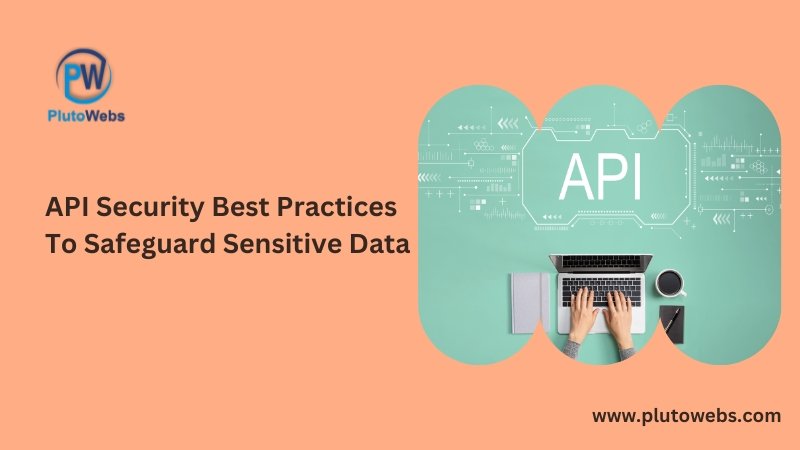
The use of APIs (Application Programming Interfaces) is now commonplace because more people are using various technological solutions. As a result, API security is a bigger problem than ever in creating apps. SaaS businesses typically have 350 integrations, compared to significant SaaS businesses like Slack, Zoom, and Shopify, which have over 2,000 connectors. Application Programming Interfaces (API) make life simpler, which is fantastic for developers and end users. However, there is a persistent worry about API security, particularly for open APIs that demand third-party logins. The pressure on developers to complete their work under arbitrary time constraints raises questions about quality standards. So how can businesses use the API ecosystem while ensuring that their data is protected from hackers? How? By utilising API security best practices. The top four security best practices will be discussed in this post as a way of protecting your APIs against malicious assaults. Describe API security API security is the process of defending APIs from risks and assaults. Today, every company and website has hundreds, if not thousands, of integrated APIs, many of which hold private or sensitive data, making it essential. The following procedures are put in place for effective API security protections; The queries that the API processes come from legitimate, reputable sources. All of the requests that are being handled are valid. Neither the answers nor any of the encryption can be broken. Your API implementations will probably use either SOAP (Simple Object Access Protocol) or REST (Representational State Transfer), two widely used web service access protocols, depending on your company and the type of data involved. Because SOAP is standardised, it doesn’t require HTTP and contains built-in error handling. REST is quicker, easier to learn, and doesn’t need expensive equipment. But by design, SOAP APIs are also more secure. To learn more about these two communication protocols, see this SOAP vs. REST comparison article. API Cyberattacks and their Types Because they typically include documentation about their structure and creation, APIs are vulnerable to attacks. In their efforts to acquire confidential data, hackers can use this to reverse engineer APIs. The most frequent assault types are listed below. The DDoS Attacks Distributed Denial-of-service (DoS) attacks are the most common kind. The attack is carried out on an API by overwhelming its memory through thousands of attacks, which result in the API slowing down and ultimately crashing the web server. Another way this happens is hackers send a vast amount of information in each request instead of thousands of requests. Stolen Authentication The quickest approach to gain access to user data might be through compromised authentication. Hackers gain access to the API by stealing a legitimate identity. The authentication token is typically taken and then used improperly. Cybercriminals will also get around poor authentication if the token isn’t used to obtain access. Man-in-the-Middle Attack A man-in-the-middle (MITM) attack takes place when a hacker is able to eavesdrop on the communication between the end user and the API. When neither one-way nor end-to-end encryption is in use, this typically occurs. Private data, such as login credentials, may frequently be taken as a result of these aggressive attacks. Best Practices of API Security After discussing the significance of API security and the kinds of cyberattacks to anticipate, let’s discuss some of the best practices for API security to safeguard your users. Use strong user authentication Lack of or subpar authentication is the main reason for API security breaches. Authentication provides evidence that someone is who they claim to be, much like having a company explain its LLC founding purpose precisely to demonstrate its authenticity. Your APIs must be secured because they are the gateway to a company’s database. Utilizing one-way, strong user authentication lowers the security risk associated with lost user authentications. Multi-factor authentication or, even better, a trusted authorisation method like OAuth is the best way to achieve strong user authentication. Either approach restricts access to online services to only authorised users. Encrypt Every Bit of Data, whether Online and Offline To defend against numerous assaults, the most frequent of which being MITM attacks, it is imperative to encrypt data. These occur when criminals gain access to private data, including login passwords, credit card numbers, account information, and other personal data, as previously mentioned. To prevent theft, data transmissions between API servers must always be properly secured. Statistics show that 33% of all Americans have experienced identity theft, with credit card fraud being the most frequent type. The Transport Layer Security (TLS) protocol, an improved version of the Secure Sockets Layer (SSL) protocol, should be used to encrypt all communications between businesses. While one-way encryption is an option, two-way encryption is significantly more effective and secure. Consider WhatsApp. The application ensures that every chat is end-to-end encrypted, demonstrating its high level of security. With this level of security, people will find WhatsApp appealing. Data encryption is therefore crucial, but it’s always good to have extra security. Utilizing credit protection services is another means of preventing ID theft. Services for credit protection assist you in keeping an eye on your financial activity and making sure no fraud takes place. These services will aid in repairing your credit score if it has been negatively impacted. Additionally, adding API Throttling and Rate Limiting can assist alleviate this issue. Hackers are very interested in APIs since they include a tonne of private data. Sadly, this also leaves APIs open to DDoS assaults. A good place to start in preventing successful API attacks is by putting rate limits in place. Decide at what point all requests will be declined. 8,000 requests per account per day, as an illustration. Use throttling in addition to threshold restrictions. Throttling algorithms carry out additional safety measures and verify the validity of APR requests. Additionally, consumers will still have access to the API and you’ll prevent breaches even though throttling would make a user’s connection slower, which is frustrating. With both in place, there is less likelihood that firm data will be compromised
How To Optimize The Largest Contentful Paint & Rank Higher In Google

Are you curious about what Largest Contentful Paint signifies and how it may impact the effectiveness of your UX and SEO? Go on reading! You’ll learn what LCP is, how to test it, and how its grade is affected by certain situations. Additionally, you’ll discover how to improve WordPress performance and repair a poor LCP score on desktop and mobile (Largest Contentful Paint longer than 2.5 or 4 s). Simply put everything is in English! Definition of the Largest Contentful Paint (LCP) and Why it Matters? The time it takes for the most significant element to become visible in the viewport is measured by the Largest Contentful Paint (LCP), a Core Web Vital statistic. You won’t see practically anything on the page until the LCP loads. The LCP element is always above the fold, or at the top of the page, which is why. LCP is typically a text or graphic block. But it may also be a cartoon or a video. The LCP component can vary between desktop and mobile platforms. The biggest aspect, as you would have guessed, is the one that matters the most for perceived load speed and user experience. Consider this: you won’t have a nice user experience if the page’s main component takes a long time to load. While you waited for the website to load, you would see an almost blank page. Even leaving the website is possible! A few more seconds might go a long way when you’re browsing. Because of this, Google has added LCP to the Core Web Vitals metrics, which gauge how excellent your user experience is. LCP went live recently in June as a component of the Page Experience Signal, a new ranking factor. Because of this, Largest Contentful Paint is important for giving a fantastic user experience as well as for enhancing your SEO performance. LCP also contributes 25% of the overall PageSpeed Insights score. Your page speed grade will probably increase if you increase its performance. LCP is currently one of the most significant performance metrics, to put it briefly. The Ideal LCP Score LCP should be less than or equal to 2.5 seconds to achieve a high score. The page will receive a green score and pass the test if this is the case. The score “needs improvements” if LCP is between 2.5 and 4.0 s; you’ll receive an orange grade. Let’s say that the LCP is longer than 4 seconds. If the score is “poor,” you should make the necessary corrections as soon as you can. Now let’s look at How we may Locate the LCP Component. The LCP element can be located and measured in a variety of ways using both lab and field data. The most popular equipment for LCP testing is listed below. Lab Data tools: Lighthouse PageSpeed Insights Chrome DevTools WebPageTest GTmetrix Field Data tools: PageSpeed Insights (if available) Chrome User Experience Report (Field Data) Search Console – Core Web Vitals report (Field Data) In our article on PageSpeed Insights, we go into greater detail on the distinction between Lab and Field Data. Let’s discuss PageSpeed Insights and Search Console, two of the simplest and most useful tools. Using PageSpeed Insights to Assess and Identify LCP The simplest method for measuring and locating the LCP element is PageSpeed Insights. You will receive the LCP grade in the Lab Data and the Field Data after evaluating the URL’s website (if available). Additionally, you’ll receive PageSpeed advice to help you perform better. Locate the “Largest Contentful Paint element” section under Diagnostics. The LCP element for the page you’re evaluating will become clear to you. In order to make things clearer, let’s go over a few examples. The Mobile LCP Example We use the tool to test the page’s functionality, then we navigate to the Diagnostics section. The H1, or title of the blog post, is the LCP element. An outstanding user experience will be provided by the page as long as the primary headline loads quickly. Example of LCP from Desktop Once more, we visit the Diagnostics Area and search for the LCP component. Unsurprisingly, LCP differs from mobile LCP. The LCP for desktops is quite different: As a page-based tool, PageSpeed Insights, we advise you to do many tests for various pages. You should also use the Search Console for a comprehensive analysis. Finding LCP and Measuring It on Search Console The Core Web Vitals report in Search Console allows you to evaluate the performance of your entire website and identify any problems. Both performances will be accessible on PC and mobile: When you access the report, you can see how each criteria is being met by the pages on your site: good, requires improvement, and poor. Each Core Web Vital performance is grouped in the Search Console report according to status, issue kind, and URLs. You might, for instance, have some URLs that aren’t working properly for LCP. If so, you may see “LCP issue: longer than 2.5 s (mobile)” in the report. You can access the list of URLs that need to be corrected by clicking the entry that corresponds to that particular problem. While these URLs are merely examples, they can nonetheless help you understand what is happening. Finding the URL pattern and continuing with the patching and validation will be rather simple. What Affects LCP and Results in a Slow Score Delayed server response times, render-blocking JavaScript and CSS, and slow resource load times are three variables that have an impact on LCP for WordPress sites. Slow Response Times from Servers The server receives a request from the browser, but it takes too long for it to provide the desired material. It takes some time for things to be rendered on your screen since the content isn’t delivered to the browser quickly enough. The outcome is a poor load time. It has an impact on the LCP score. By lowering your Time to First Byte, utilising a CDN, and establishing third-party connections early,
Tips & Best Practices for Monitoring the Performance & Health of Websites

Any company that wishes to thrive in a highly competitive climate needs a website. Many individuals are under the impression that websites are solely necessary for e-commerce projects, however this is untrue. Virtually every effort should have its own webpage, and every firm needs website performance monitoring. However, the focus of this article is not on the necessity of websites but on how to monitor and manage their performance. People prefer to avoid Error 404 or having to wait an eternity for a website to load. This is the quickest approach to provide the upper hand to rivals. How can you make sure your website is operational? Just follow good monitoring techniques. Let’s begin with the fundamentals. What is monitoring website performance, and why is it important? Website monitoring is a thorough assessment of responsiveness and performance designed to reduce fault time, accelerate page load times, and guarantee the greatest user experience. For most firms, ignoring website performance is a serious problem. The biggest online retailer in history, Amazon, had a 40-minute website meltdown in 2013. The company lost sales of $4.72 million as a result of the downtime. More subsequently, it was projected that the Facebook crash in October 2021 cost $100 million! This demonstrates once more the clear link between financial success and website performance as well as the risks associated with maintaining business websites. The corporate website functions as an online version of the business card. Online research regarding a certain brand or solution is typically where people start. As a result, one of the elements that contribute to the first impression of the business as a whole is the speed at which page loads. In conclusion, website monitoring resolves a wide range of problems, from service quality control to web server capacity planning, and enables the detection of errors before users become aware of them. What needs to be observed for site optimization? The general strategy for site optimization is as follows: it’s critical to keep an eye on the load on the system, the load on the web service components, the network availability of the server, and the hardware health factors. Additionally, it is essential to gather precise, individual data that support identifying and comprehending the root causes of problematic site behaviour and the planning of server resource development. Let’s look at the things you should check and the things you should do. What to check? Examine the website’s response time. A web server running virtual hosts Web services for SOAP All-around server health What to do? Measure web server performance using SNMP and WMI. Compile data on HTTP errors Examine web server notifications and logs Utilize Syslog and Windows Event Log to analyse server issues. Consolidation of a failover cluster’s or load balancer’s server status Keep an eye on the databases and servers that support your web servers. Keep track of the server KPIs for CPU, RAM, bandwidth, and other factors. Compile downtime information on an hourly, daily, weekly, monthly, and annual basis. Application Performance Monitoring (APM) solutions may be used to monitor the majority of these characteristics, which can give businesses a better understanding of the functionality and performance of websites and web apps. For instance, Retrace APM offers deep integration and functions like a library that is installed in a codebase. The technology also enables you to check that web apps are performing as intended and that service levels are being met. The APM tool swiftly identifies and resolves issues before they become user complaints. How often should you evaluate the Effectiveness of your Website? Performance testing should not only be done once a year. The setup of your web server, changes to the code, the volume of traffic you receive, the content of your website, and other factors can all affect how well your site performs at any one time. At the absolute least, businesses need to establish the habit of monthly monitoring. You may better prepare for traffic peaks and lulls and prevent financial losses by testing frequently and seeing patterns and trends over time. That’s All? Although it necessitates a substantial time and money commitment, improving technical performance enables firms to accomplish desired outcomes. However, maintaining a server or optimising web pages is insufficient to guarantee a secure competitive position. There are several low-cost procedures that improve website appeal, and internal and external website optimization cannot be overlooked. You must first perform technical optimization, which implies: Examining the robots.txt file for accuracy: this file is in charge of indexing the website and removing duplicate pages. Htaccess validation: This file is in charge of rerouting users from inactive pages to those that are required. Code updates: this denotes the elimination of extra tags that lengthen the code. The search engine should delete the page from the index if it doesn’t exist on the website, therefore check the 404 error settings. The second thing you need to do is figure out external site optimization, which includes structuring internal page linking, optimising the content on landing pages, and using meta tags. Additionally, external site optimization entails a content marketing plan, which includes posting engaging, new, and helpful information for visitors, professionally edited online video tutorials, link exchanges with other top-notch resources, and more. All of these are requirements for effective and usable modern web design, which is becoming more difficult every year. Businesses that don’t want users to describe their websites as routine or uninteresting can choose to implement these guidelines. Final Wrap Up A successful website constantly provides the finest user experience to its visitors. Delivering spectacular content, excellent designs, and outstanding performance involves diversifying. If you eliminate even one of these components, your client experience will inevitably fail. More than concentrating solely on load times is required when it comes to performance testing. Apply other test kinds instead to obtain a more accurate image. And develop the practice of performing them frequently. Additionally, use Retrace to find more QA issues and take advantage of a website that offers superior
Content Repurposing: The Modular Approach to Marketing
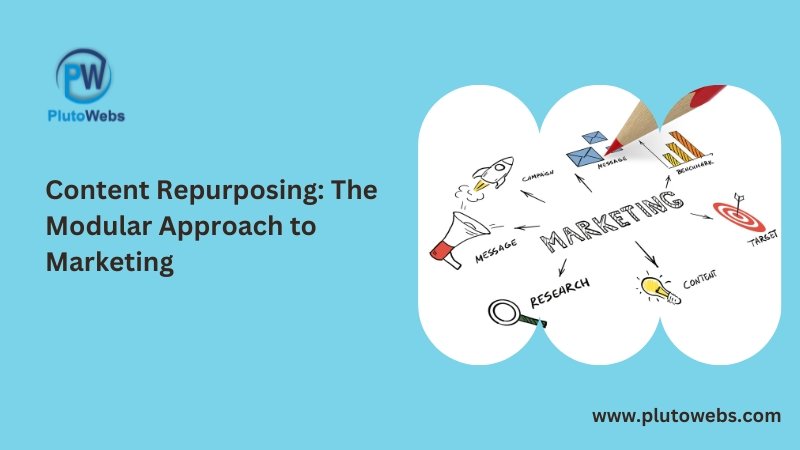
There are numerous different content formats and content marketing strategies. Everyone has their position. Each provides various advantages. Since it might be challenging to produce original content consistently, most marketers have mastered the art of content repurposing. For instance, you could take a lengthy eBook and divide it into four blog pieces, use it for a newsletter, and include an excerpt in an article that is submitted to a trade journal. Or you could use screen captures to replace the pictures in a speech-heavy film that you have transcribed into a blog article. A sort of repurposing that is more about personalising than simply getting additional mileage out of your content is to adapt it for different target audiences. Deconstructing your “reimagined” content into micro-content for social sharing is a typical next step. The majority of content repurposing techniques used by marketers involve breaking down larger chunks of material. This is made easier by using a modular strategy—so to speak, square pegs in square holes. But have you ever considered going the other way? You can locate important themes and other components within a template by using a modular approach to content marketing planning. Working with pre-defined key themes as building blocks ensures you’re covering what needs to be covered and makes reuse and personalisation that much easier (mapped to your content plan and consumer segments). It is similar to establishing a foundational content object that will be localised and tailored for various target audiences in various regions. In a typical case of content repurposing, you start with a collection of ideas in a bigger content object, divide that collection into smaller ideas, and then remix and reimagine those smaller ideas to produce other smaller content objects. I advise you to try it the other way around. Micro-content, such as statistics, quotes, advice, and examples shared on social media individually, could be combined with other smaller pieces of information into a larger content object, such as a blog post, report, eBook, or presentation with the correct planning. The simplest way to do this, in my opinion, would be to gather around 25 data on a subject of interest to your target audience and then plan to publish those numbers on social media over time. Repeat the process with 25 quotations and 25 concise, helpful pieces of advice. 75 social shares total over the time frame you choose to use as a layer for your social curation. Do daily interactions and shares based on what is going on right now. There are certain boundaries that someone is breaching by using a template, working with modular material, and scheduling social media posts. However, in practice, it is valuable to readers and achievable. Since it’s micro-content, you can also iterate and enhance with low risk. Why would it be logical for micro-content to develop into something bigger? Here are some of the causes: Regularly posting microcontent to your community is like sowing the idea that this is information relevant to how you want to be known. The preparation for the publication of the larger content objects involves drawing attention to and establishing credibility with that material. Micro-content is extremely shareable, and if you consistently provide informative tidbits, you’ll build the audience you need to make a bigger impact with the main content piece. You will receive data through publishing short-form content, particularly on social media. Views, shares, interactions, links, and basic demographics while using a URL-shortening service. The larger content object’s component pieces can then be built differently as a result of the information provided. The eBook or blog article only includes the tips that have received the most shares and interactions, while leaving out those that have received less. Curating micro-content is simple, offers your target audience important information, and can be integrated into a social content pipeline that builds up to a bigger content initiative. SEO-friendly content ranges from micro to large. Similar to optimising content for search visibility, variants on a topic are collected into a larger content item. Repurposing content in this way entails more than just compiling a collection of unrelated facts and advice. Microcontent would act as the modules or building parts of a broader narrative that would be interesting to the audience you are trying to reach. I believe that including micro-content in your social media curation strategy could lead to the development of new content creation options, particularly if you incorporate community involvement and crowdsourcing. It is a search engine and social media friendly, and you can develop a following for the thing you want to be recognised for before starting a significant content initiative. How do you use content repurposing for marketing? Have you ever attempted going backward and assembling a bigger content piece from smaller, previously published data points?
SEO vs Paid Search: A Primer
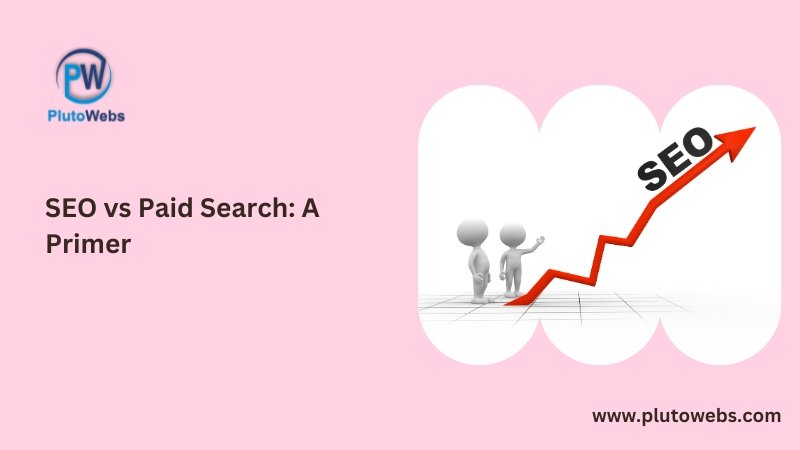
As both attempt to draw Google searchers and turn them into customers, SEO and Paid Search (also known as SEM) frequently battle for attention from traditional marketers. However, paid search and SEO serve different purposes in your digital marketing plan. SEO is a medium-to-long-term tactic that takes a lot of work but yields a great return on investment. SEM is a short- to a medium-term strategy with little work and a low return on investment. A thorough comprehension of these two channels is necessary to maximise their efficiency. Their distinctions are broken down in the table below. Attributes SEO Paid Search ROI Low initial ramp, high long-term Low yet offers quick returns Average Conversion Rate 2.4% 1.3% Cost Low initial startup, moderate long-term Medium to high, rising over time as a result of PPC inflation Type of Website Traffic Organic Inorganic Execution Challenge High; Needs a knowledgeable team to choose keywords, figure out search intent, produce content, and publish frequently. Low; anyone who uses marketing can put it up, but how successful it depends on the careful choice of keywords and prompt maintenance. Marketing Position Because of its high ROI, is well suited to serve as a key marketing investment; The developed content can be reused for different forms of marketing, including social media and email; Can be challenging to carry out internally given that Google promotes consistent posting and thought leadership that is search intent-focused. Excellent for generating leads quickly when short-term costs are more essential than long-term sales; An excellent auxiliary tool for keyword research or market expansion when used in conjunction with an SEO strategy. The benefits and drawbacks of each strategy are discussed here, along with a clear comparison of the conditions in which SEO and paid search are most effective. We also go over when it makes sense to combine the two methods. SEO: Benefits and Drawbacks Both art and science go into modern SEO; ranking is no longer achieved by merely writing and releasing content with keywords in the meta titles. You must comprehend your target audience, choose keywords that they frequently use, check them for transactional purposes, and—most importantly—produce fresh thought leadership material that addresses their search criteria. When done correctly, SEO thought leadership builds industry authority, increases trust with Google and customers, and produces quality leads for your sales staff. The following are the main benefits and drawbacks of SEO: Advantages of SEO: Among digital marketing platforms, the highest long-term ROI Greater conversion rates and shorter sales cycles due to greater consumer trust Produces content that can be used in your other marketing channels. Rewards marketing expertise and high-quality content over plain marketing spending. Disadvantages of SEO: A Hub & Spoke plan must be developed and implemented by a skilled team. Slower launch; it often takes 4-6 months to see the first benefits. Benefits and Drawbacks of Paid Search While sponsored search enables businesses to pay Google to have their page appear above the search results page for their chosen keywords, SEO relies on content quality to meet the variables that determine Google ranking. Visitors see these before the natural search results, but they get clicked on far less frequently. Paid search, as opposed to SEO, enables businesses to significantly improve their online traffic without having to spend money on content production and ongoing publication. However, when used as the main source of leads, it has a lower ROI than SEO and can rapidly get pricey. The following list of paid search’s benefits and drawbacks: Advantages of Paid Search Brings in site visits right away, producing leads quickly. Execution is relatively simple because positioning is based on ad spending rather than content quality. Changes to the Google algorithm have no impact on ads. Disadvantages of Paid Search Results only last as long as you keep paying for them. Long-term low ROI, rising costs as a result of PPC inflation Searchers do not trust them, which produces cooler leads. Extremely pricey in industries with high levels of competition where ad purchasing is common Combining SEO with Paid Search The most effective digital marketing efforts use both SEO and sponsored search; they are not mutually exclusive. Although SEO performs particularly well as a major marketing investment due to its high long-term value, many businesses struggle with the relatively long lead time. It’s also necessary to limit your keyword selection to no more than 4-6 emphasis regions in order to effectively implement a Hub & Spoke approach, leaving out potentially profitable keywords outside the main hubs. Paid search can help to close these gaps by generating leads quickly, serving as a testing ground for new keyword niches, and generating leads from queries that are unrelated to the primary objective of an SEO strategy. Ads are only shown to searchers who have previously visited your website using the retargeting tactic, which increases the possibility that they will come back and convert to leads. The searcher has already established a relationship with your website, avoiding the decreased trust of adverts while maintaining awareness of your goods and services. Outsourcing your Paid Search or SEO Activities It takes effort and dedication to manage marketing campaigns that can maximise the advantages of many platforms. As a result, a lot of businesses collaborate with a company that has a track record of delivering top-notch SEO services and achieving outcomes. Contact the trusted Digital Marketing Company if you’re interested in finding out more about how to execute SEO vs paid search.
Branding Mistakes you’re Making and How to Fix Them
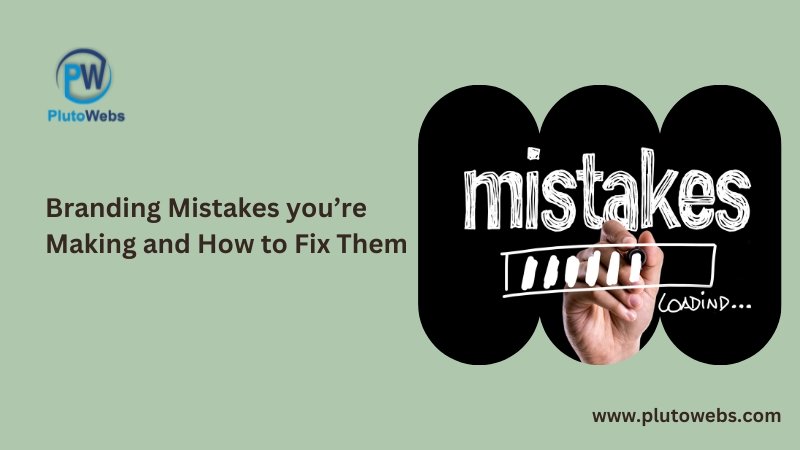
For your company to continue to expand and be seen, you must develop your brand. However, if you don’t have a strong brand identity and brand strategy, it’s simple to make branding mistakes. You may develop a brand without sacrificing your company’s credibility by correcting these typical branding errors. Learn how to improve your brand strategy, authenticity, and execution by avoiding these typical branding blunders. Lack of a Branding Strategy This seems to be a given. Some might believe that as long as they are delivering value to a devoted audience, branding will take care of itself. When tactical pivots must be made, not having a clearly defined brand strategy becomes troublesome. For instance, when a brand doesn’t live up to expectations, when the leadership changes, or when a new competitor enters the market. When this happens, the effects of the brand’s lack of a north star are most severe. You can handle change and know when to invest if you are aware of your brand’s distinctive solution, goal, vision, projected path, and audience. The Important Parts of a Brand Strategy To enhance your customer mission and audience awareness, take into account these questions as you build your brand strategy. i) Purpose, vision, and essential values of the brand ii) How the company goes about entering the market Who would make a good audience? How does the brand stack up against the competition and specifically address the needs of the target market? How will this brand be found in the marketplace by the target audience? iii) The brand’s tactical activation components The character of the brand How the brand interacts with and appeals to the public once it has gained awareness. Not Spending enough on Branding Only you can choose the ideal blend of direct marketing and brand recognition required to meet your immediate and long-term goals. The strength of your company and the development of your brand should be important elements. If you’re thinking of cutting back on your brand spending due to impending economic uncertainties, reconsider. In fact, powerful leaders would argue that now might be the ideal time to launch an offensive. You will have an even greater chance to distinguish yourself as a thought leader if you seize this opportunity when others choose to slow down their awareness spending. To ensure that your brand and its value are top-of-mind, now is the time to make audacious decisions to get your name into earned media, submit for industry awards, and step up engagement with your current customers. Excessive Focus on Brand Design Elements An effective logo and vibrant colours can do wonders for a brand. But let’s be honest, the heavy lifting is done by the experiences that follow. Your website, your store, if you have one, your content and media assets, and your staff members who interact with customers are a few examples of these. Here, it’s necessary to exercise caution so as not to focus primarily on brand identity design and neglect to provide other crucial brand components the attention they require. Ignoring the Value of Your Brand’s People One strategy is to make a map of all the encounters your audience has with people associated with your brand, whether they are with the front desk customer service employees, the cleaning crew, or the business president. Every interaction should be in line with your brand, which calls for providing ongoing coaching and training to promote staff best practices. You can also neglect the role of spokesmen. You could be the undiscovered asset your business needs to develop its brand. It may be more effective to market you as a thought leader to develop the brand, increase awareness, and spur growth. Individuals want to buy from people, which is why. In most cases, what counts most is the person behind the brand and the relationship. Find opportunities to use a leader or leaders who can establish enduring authority and who embody the values of your brand to bring your brand to life. Choosing Trends Instead of Brand Authenticity This one is enormous. How frequently do people bring up a fresh concept during leadership talks that they learned about through reading about another company implementing it or that exemplifies a popular consumer trend? It goes without saying that you should keep an eye out for new trends that could affect your business. Additionally, there are occasions when it makes sense to adopt a good idea that is consistent with your brand, but it is always a good idea to consider whether doing so will come across as genuine and true to your brand’s values. This brings up the first typical branding error once more. To act as that north star, you must have a brand plan in place. Not Changing Your Brand Strategy Yes, a brand’s best friend is consistency. To ascertain whether the brand strategy is still necessary or if it needs to be developed, it is occasionally necessary to test and develop it. Every year, there will be little adjustments that are worthwhile making to make sure the brand strategy develops alongside the market, audience, and the brand itself. Even if not a single word changes, I advise a brand strategy checkup every year. That presents a chance for reinforcement, at the very least. You might make more than a small shift when a significant environmental or brand moment happens. Don’t be reluctant to succeed. A reliable outside source can assist you in identifying opportunities or misalignments that may be challenging to detect from the inside out. Underestimating the Chance to Leverage your Brand to Express an Opinion. The modern consumer is more keen to buy from a company that aligns with their values and worldview. Make it clear to your audience what you and your brand stand for because they care. Even locally, you can seek for chances to stand out in ways that are consistent with how your brand enhances the environment around you. You can
Search Marketing Trends and Must-Haves for 2023
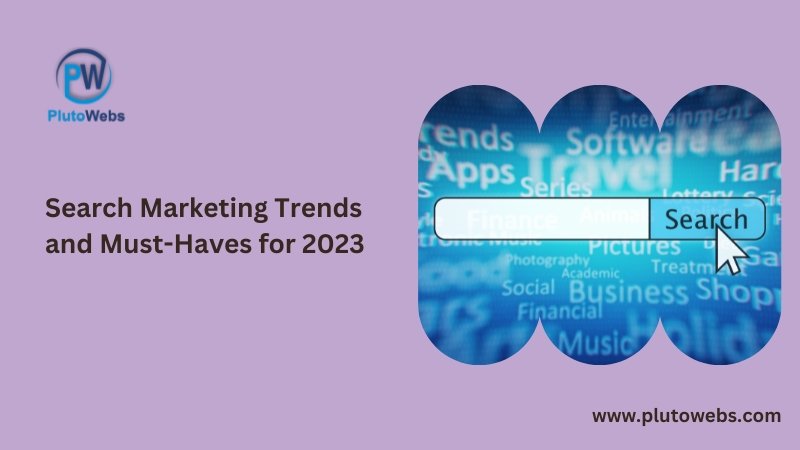
It’s a perfect opportunity to examine significant consumer and search behaviour shifts and plan our important digital marketing objectives for 2023 as we get ready to bid 2022 adieu and welcome 2023. The most important consumer, digital marketing, and search trends will be covered in this article, along with the must-haves for search marketers in 2023. Trends in Search: Knowledge and Relevance Let’s first examine the key developments in search this year and what to anticipate for the following year. In 2022, Google released a number of algorithm improvements. Three major categories can be used to group these algorithm modifications. Updates that were released to improve and secure search. Updates made to search results to make them more relevant and helpful. Updates have been made to improve user experience on all devices. Google obviously wants to honour websites that provide exceptional user experiences. This implies that your material must be pertinent to their search. In other words, success in search today and in the future depends on experience and relevance. Let’s keep these two essential elements in mind as we create the ideal recipe for search marketing strategies and must-haves for 2023. Consumer Insights and Trends: Reassessing Priorities We became aware of how important it is for companies to gain the trust of their customers as we looked at this year’s top search query data and valuable insights offered by various organisations. We are concentrating on five of the most important consumer insights you should keep in mind while developing your search marketing strategy for 2023, even if there are numerous data points and trends that are being explored. Consumers are concerned about their privacy and look to brands to make sure that their data is not shared. Consumers are drawn to brands that include environmental activities into their advertising and marketing campaigns. A wonderful example of tailoring experiences depending on geography, tastes, search history, etc. is Google Shopping. To engage the customer, a more visual and interactive experience is essential. It’s essential to make decisions based on a variety of data inputs. Understanding consumer trends and insights make it easier for us to assess marketing priorities and ensure that our advertising is relevant, tailored, and beneficial to customers. Let’s now examine five important marketing trends, followed by strategies for utilising them in 2023. Top Marketing Trends for 2023 We need to start the year of marketing off correctly and change our perspective. The days of keyword density and the idea that content is the only king have long since passed. More is not always better. Quality should always take precedence over quantity. To meet our customers’ expectations, we must reassess our priorities. Following an analysis of search queries, consumer and search analytics, and the major 2022 releases, we’ve listed five significant trends and three essentials for a prosperous 2023. Multisearch can Help you do Unconventional Searches Over 82% of consumers’ time is typically spent on discovery. This year, Google introduced multi-search and released a number of supporting algorithms that aim to revolutionise how we all find information and consume it. Google continuously experiments with various formats to show relevant search results from many sources, which reflect how people are researching a wide range of topics. The good news is that we can now search across a wide range of media, including texts, PDFs, videos, photos, and other assets. We can directly benefit from multi-search because it has created the biggest unexplored prospects for marketers. Customers may use Google Lens to explore every aspect of any image they take. Google can deliver the most pertinent search results more quickly by utilising entity data in conjunction with top-notch, pertinent, and contextual photos. Smart search marketers will use all kinds of assets, the Google Vision API, and entity data in 2023 to give the most accurate and high-quality assets. Creating digital assets that are future-proofed for discovery is the secret to opening doors and succeeding in 2023. Relevant, High-Quality, Easily Available, Reliable, and Practical Content Google recently made changes to its helpful content system and quality raters criteria. Covering important touchpoints and micro-moments is the simplest approach to determining whether your information is beneficial. When your customer can easily access your content across all of their digital touchpoints, it reduces the need for them to look elsewhere. A machine learning algorithm that is always being improved based on search result datasets is what Google uses to update its helpful material. It is a site-wide signal, thus there is a considerable chance that your organic search performance could suffer if an excessive number of a domain’s pages are low quality (e.g., duplicate, thin, or made just to rank in search engines). Search marketers will need to make sure that discoverable content is immersive, authoritative, instructive, and qualitative by 2023. Businesses that share helpful and high-quality content will receive rewards from search engines. By posting topical entity-first content, brands should greatly increase their online presence. Every sort of material should be included in the content strategy, including videos, FAQs, reviews about products, relevant photos, PDFs, and professional advice. Additionally, brands must map out the present content across the touchpoints of the customer journey and work to fill in all the content gaps. Single Channel Experience The majority of consumers switch between different devices, thus it’s crucial to provide a cohesive and consistent experience across all touchpoints. For a smooth omnichannel experience in 2023, the business must centralise important data and disperse it among all marketing channels. Consumer confidence is increased by the rapidity of change across channels. For instance, when your company decides to update the details of your social media profiles or Google Business Profile, the information on your website should be updated immediately. Google is gradually encouraging advertisers to pay more attention to customer behaviours and attribution from different channels along the customer journey than the last-clicked channel with the release of Google Analytics 4. In 2023, finding new material, having a positive user experience,
Local Search Developments you Need to Know About

What distinguishes local SEO from standard organic search results, and what does this mean for your marketing plan? Any SEO plan aimed at clients in a particular area, city, or neighbourhood must include local search. In order to increase your rankings and visibility in local search results, such as Google’s Map Pack/Local Pack, you should concentrate on local SEO. Increasing webpage rankings in organic search are done through organic SEO. Your website’s position in those organic results can have a beneficial impact on how well it performs in the Local Pack. When Google believes that a search query has local intent, organic results are another fantastic opportunity for your local business to show up in front of eager searchers. Therefore, despite the fact that local and organic SEO are connected in these ways, each calls for a distinct strategy that uses various optimization techniques. Let’s start at the beginning and ask what local SEO is and why it matters. Local SEO: What Is It? Search engine optimization for local search results is known as local SEO. This entails assisting Google in making your company’s listing in the Local Pack/Map Pack rank higher and show up more frequently in response to a higher volume of pertinent queries. Consider the last time you went out into the world in pursuit of something. Perhaps [men’s shoes], [daycare centers], or [coworking spaces] were involved. The goal of Google is to provide users with the most relevant results for every search. And those Map Pack results will be prominently shown on the first page of the search results when its algorithms determine that your purpose is local — that you are seeking something in the vicinity of you. Additionally, organic search results for establishments and services in your neighbourhood may supplement them. Local results may show up as the default view above all organic material when you search for something like [Mexican restaurants open now]. Google has identified your demand as being urgent and local. A plain blue link is less likely to satisfy that demand than the information provided in local search results, which includes company name, address, phone number, website, images and videos, customer reviews, and star ratings, among other things. Best practices for SEO generally include following Google’s Webmaster Guidelines and focusing on the user experience on your website. If you want your website to appear in organic search results where Google has concluded that the query has a local intent, doing this is crucial. However, as MapPack results are heavily influenced by your Google Business Profile (GBP) listing, you can appear in the Map Pack even if you don’t have a website. They might incorporate data that Google has gathered from other websites as well as user ideas. The most significant of these is Google’s “Guidelines for displaying your business on Google,” which also has a distinct set of rules specifically for local SEO. These rules are crucial for increasing your visibility in the Map Pack and preventing the suspension of your listing. Please keep in mind the distinctions between local organic and the Map Pack as you read through our Local SEO Guide. On-page optimization of your webpages, technical SEO for your website, and other topics may occasionally come up. These subjects deal with your chances to show up in local organic results and use your website to enhance Map Pack rankings. You are learning about local SEO as it relates to the local results you get on Google Maps as you read about local reviews and star ratings, Google Posts, and other components of your GBP. The Importance of Local Search Here are some figures showing the continued value of local search for businesses: Google reports that about 25% of local smartphone searches result in a purchase, and about 75% of those searches lead to a visit to a business. Google estimates that geography is a factor in about 30% of the searches it processes. In a recent poll on local search, about 60% of customers stated that they conduct daily local searches. According to a recent local SEO survey, about 80% of customers who are conducting a local search read online reviews of businesses and take close to 14 minutes to do so. Google Maps is used by about 85% of people to locate businesses. 90% of the time, Yelp is among the first five search results for SMB searches. Around the world, 74% of in-store customers who conducted their search prior to entering the store claimed to have looked for information such as “closest store nearby,” “locations,” “in stock nearby,” and other kinds of hyperlocal data. For their local searches, more than half of all Internet users globally utilise a mobile device. To find out more about nearby businesses, 83% of searchers use Google Search; 55% use Google Maps, 44% use Apple Maps, 39% use Yahoo, and 31% use Bing. Google’s Local Ranking Algorithm Determination Google is far more transparent about what it takes to rank in local results but jealously guards its organic search ranking algorithms. Google lists these as the top three local ranking criteria in each category: Relevance Distance Presence “Relevance is the degree to which a local business profile corresponds to a user’s search criteria. To help Google better understand your business and match your profile to relevant searches, add complete and detailed business information, according to Google’s help guide on how to raise your local rating. Distance, according to Google, is the distance between each potential search result and the location keyword entered during the search. We’ll determine distance based on a user’s location if they don’t indicate a location in their search. Furthermore, prominence in this instance refers to the level of notoriety that the company has in Google’s eyes. As search algorithms attempt to take offline significance into account, this is likely the most complicated category of local ranking factors. Increasing Local Search Visibility As you can see, local search is a crucial channel for companies of all sizes
